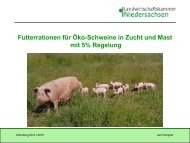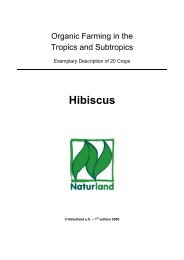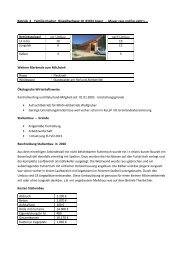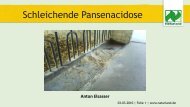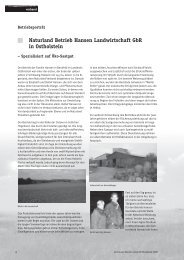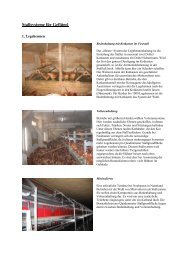Cashew Nuts - Naturland
Cashew Nuts - Naturland
Cashew Nuts - Naturland
You also want an ePaper? Increase the reach of your titles
YUMPU automatically turns print PDFs into web optimized ePapers that Google loves.
II Special section: Organic <strong>Cashew</strong> Nut Cultivation<br />
3.1. <strong>Cashew</strong> nuts<br />
3.1.1. Preparation<br />
The cashew fruits produce cashew apples and cashew nut which can be used as<br />
foodstuffs. In addition, a by-product, <strong>Cashew</strong> Nut Shell Oil, is used in the paint and<br />
brake-liner industries. <strong>Cashew</strong> apples can be eaten raw, or made into jam, refreshing<br />
drinks or spirits. The actual fruit, the cashew nut, requires a special kind of procedure<br />
in order to break open the hard shell and extract the nut. <strong>Cashew</strong> nuts are<br />
traded in a variety of different quality grades, and are used in the snack, confectionery,<br />
chocolate and baking industries.<br />
Drying<br />
After the harvest, cashew nuts need to be immediately placed out in the sun to dry,<br />
whilst being continually raked over, until the nuts rattle around in their shells (3%<br />
rest moisture). In this form, cashew nuts can be stored for up to 2 years, in ideal<br />
storage conditions (dry, dark, cool, well-ventilated). Yet they are usually processed<br />
within the same year of harvesting.<br />
Roasting<br />
The mesocarp, which is the outermost, roughly 3 mm thick oily-soft shell of the<br />
cashew nut, contains a caustic, poisonous oil called <strong>Cashew</strong> Nut Shell Liquid =<br />
CNSL in glands. For this reason, cashew nuts are usually prepared in one of the<br />
following ways.<br />
During the traditional method (used for smaller amounts), sun-dried nuts are first<br />
dunked briefly in water, and then roasted over a fire in pans with holes in them. It is<br />
important that the nuts are constantly stirred to prevent them burning. The shells<br />
break open during the heating process, whereby some of the cashew nut shell oil<br />
drips out through the holes and onto the fire. Afterwards, the split-open shells are<br />
collected in ash or sawdust to soak up the rest of the oil.<br />
Another method (so-called hot oil bath) sun-dried nuts are placed in wire baskets<br />
and dipped into baths containing hot <strong>Cashew</strong> nut shell oil (180-200°C) for 90 seconds.<br />
The shells become brittle, and some of the CNSL (ca. 25-50%) can flow out<br />
into the oil bath. Finally, the baskets are removed to let the oil drip back into the<br />
bath.<br />
It is also possible to roast the cashew nuts in a wood-fired roasting oven. Thereby,<br />
the CNSL is not removed form the shell, and can be used as industrial oil. The nuts<br />
need to be roasted for so long until the shells are completely dark brown to black.<br />
Otherwise, there is a danger that the shells will be difficult to break open, and that<br />
seeds then may become damaged.<br />
Shelling<br />
In order to get at the cashew nuts, the shells are opened either manually with a<br />
small hammer on a hard piece of wood, or by machine. Afterwards, the cashew nuts<br />
<strong>Naturland</strong> e.V. – 1 st edition 2000 page 7



